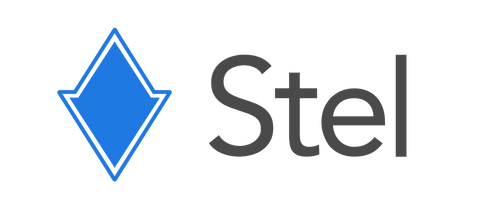
Stel’s mission is to simplify digital health device infrastructure for patients, care teams, and digital health companies. Stel's patented “Simple, Passive, and Secure Health Device Connectivity” allows patients to connect to their care team without passwords, wifi, smartphones, or apps. Stel has been called Healthcare's Starlink meets the Airpods experience.
Stel’s patented “Passive and Secure Heath Device Connectivity” allows patients to connect with their care team without requiring wifi, smartphones, or tech-literacy. Patients simply take their vitals within 100-ft of any smart IoT Hub (Stel, Amazon Echos, Routers), and Stel will securely transmit the measurement to the patient’s EHR and/or care team’s preferred digital health platform. Stel is a push only system and takes no-PHI or customer data in this process. Stel’s Cellular and Bluetooth Hub base model supported vulnerable patients experiencing the digital divide or challenging social determinants of health. This base Vitals Hub has no buttons, switches, or extra pairing steps. The Vitals Hub has a growing device ecosystem and can connect with hundreds of specialty and general devices for remote care. Stel is working to expand their Operating System to support Internet Modems, Routers, Smart HomeSpeakers, and other internet gateways to enable safe and accessible connectivity needed for all patients to connect with their care-teams.
As digital health technology and innovation moves forward, who do we risk leaving behind? The pandemic has exposed the current reality of the digital divide. 43% of lower income Americans lack broadband, 60% of medical facilities (outside of metropolitan areas lack broadband), 41% of Medicare beneficiaries lack smartphones. Patients also face personal health security risks - last year, security firms revealed that 100% of the top Health Apps were hacked. As Health Systems are creating digital front doors across the continuum of care, how do vulnerable populations get the “keys” to open the door? Stel Life’s patented operating system (OS) is the “key” to the digital front door for individuals who need to be monitored and cared for at home. Stel’s OS does not require patients to have Wi-Fi, smartphones, or technology literacy. Patients do not need to be able to read or speak English to use Stel. Stel’s OS passively pairs with home health devices and securely transmits that data to the EHR and/or care management’s preferred platform. How can Health Systems simplify secure data transition from monitoring, therapeutic and diagnostic devices in the home? Stel’s OS provides Health Systems the embedded infrastructure to standardize secure device data transmission from the home directly into the EHR. Stel has integrated with hundreds of devices - from simple vitals devices to more complex testing devices. Stel’s OS supports Health Systems and Virtual Care teams bridging health equity and access issues at scale.
Because Stel does not collect PHI, we rely on our Health System Partners for study data. Abstract submitted to Journal: [Academic Medical Center] designed a remote patient monitoring program during COVID. Patients were provided a pulse oximeter and a Stel Vitals Hub that passively transmitted the biometric results into the EPIC record. Results from our pilot of 56 patients include 376 total hospital days saved which equates to an estimated cost savings of $412,472. Approximately 50 additional patients were able to be transferred into our health system as a result of this pilot. This illustrates the clinical impact of nurse driven surveillance and remote patient monitoring to support the safe early discharge of patients weaning from oxygen at home. It is the first to demonstrate the financial impact of CMS’s decision to waive the certificate of medical necessity for oxygen claims during COVID-PHE. Health System internal financial review of Stel program with 60 patient high-risk CHF patients: All-cause readmissions at 30-day = 50% reduction, 7-day = 83% reduction, 3-day = 100% reduction, Hospital admissions = 82% reduction, Length-of-stay: 30% improvement System’s finance team credits 20 RN HF interventions that avoided hospitalization in a single month (@$9500 per admission = 190K savings in the month) Undergoing Studies that will conclude by end of year: PT/INR Study American Heart Association Study - Compliance in community barber shops Wearable Tracker Study - Early ambulation in colorectal patients with the goal of reducing length of stay and readmission rates Health System Employee Hypertension Study